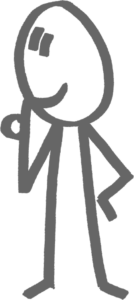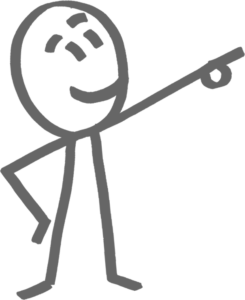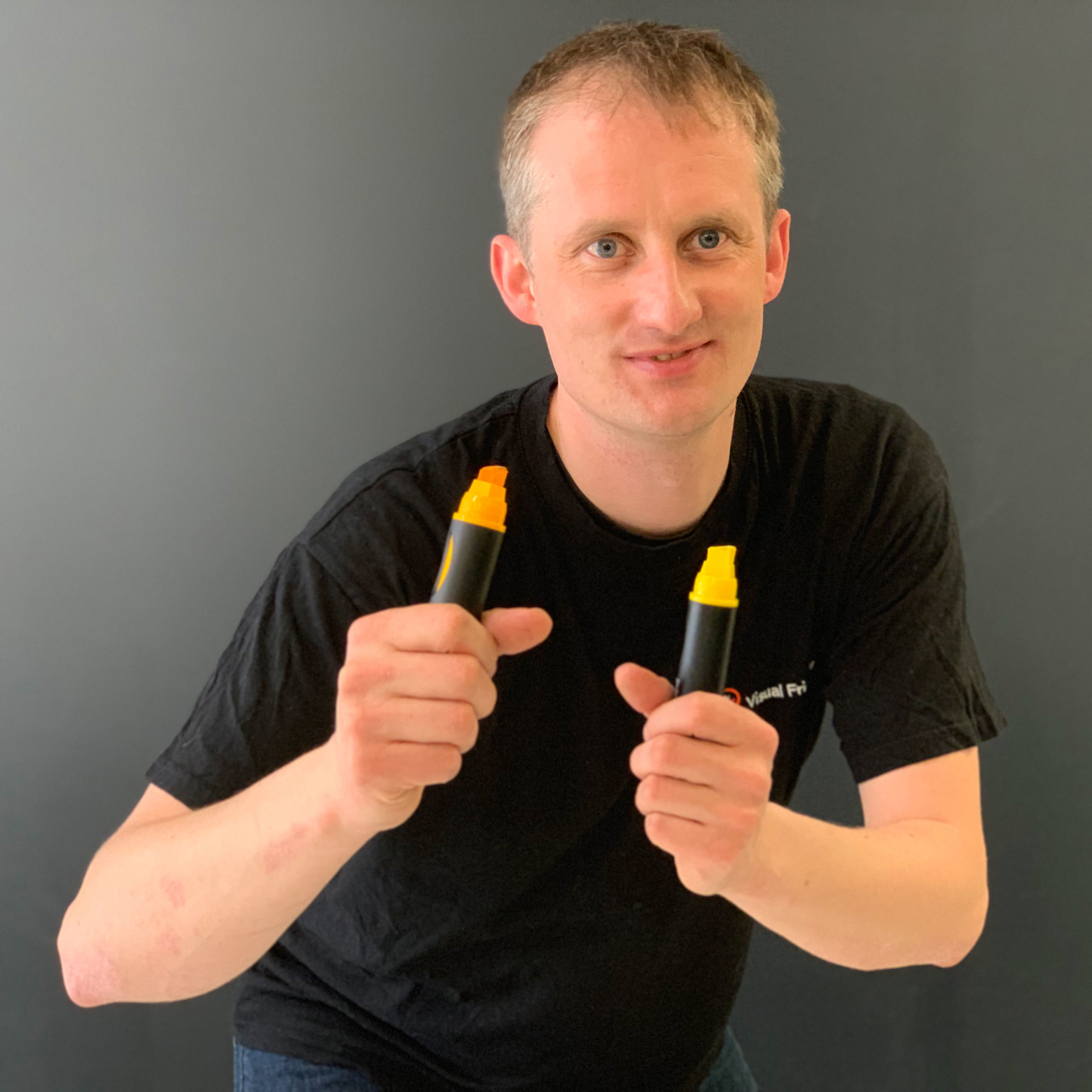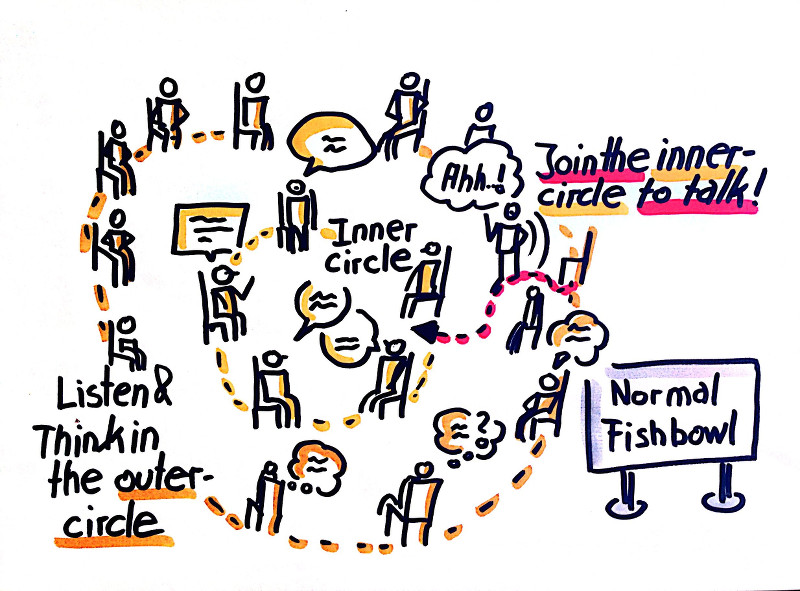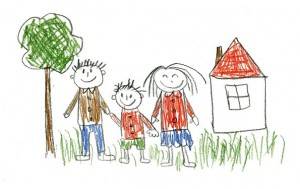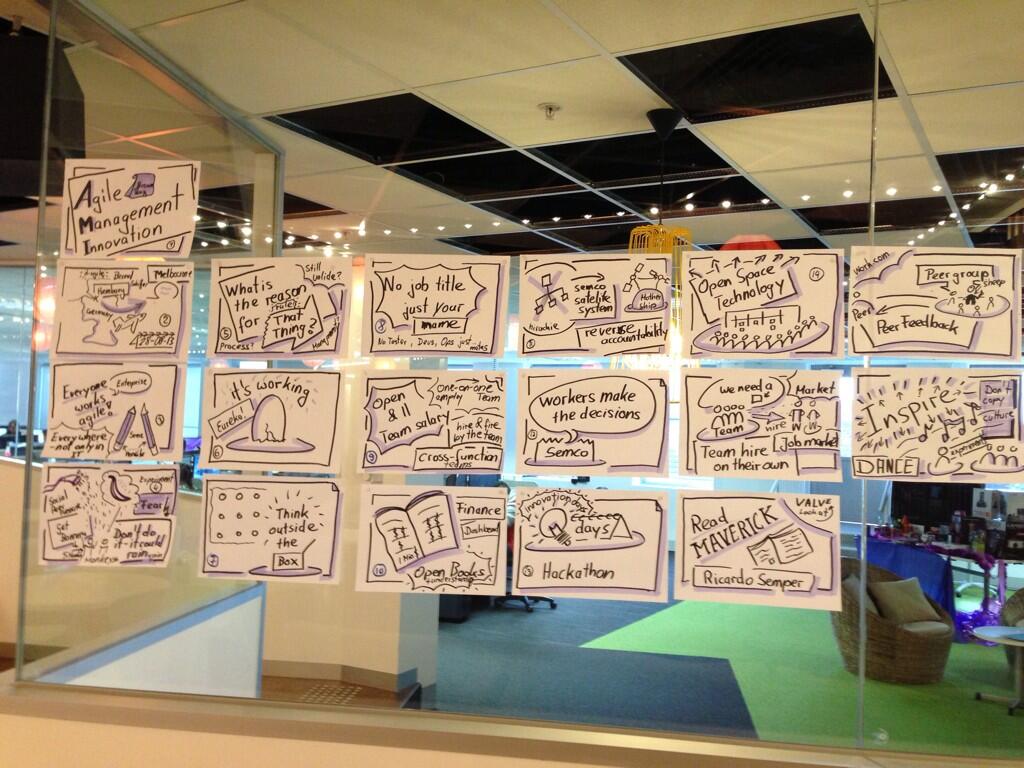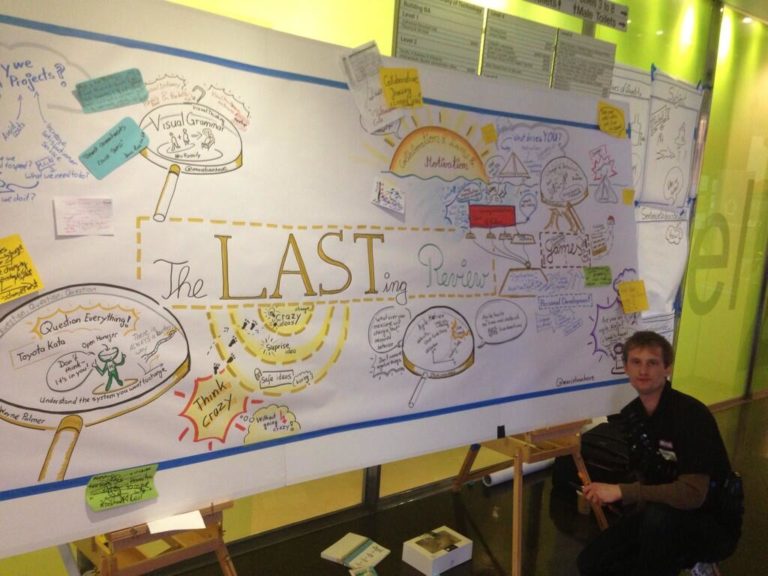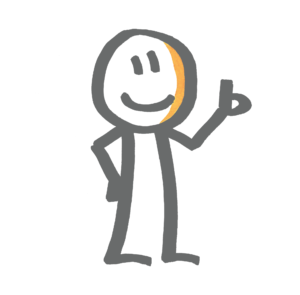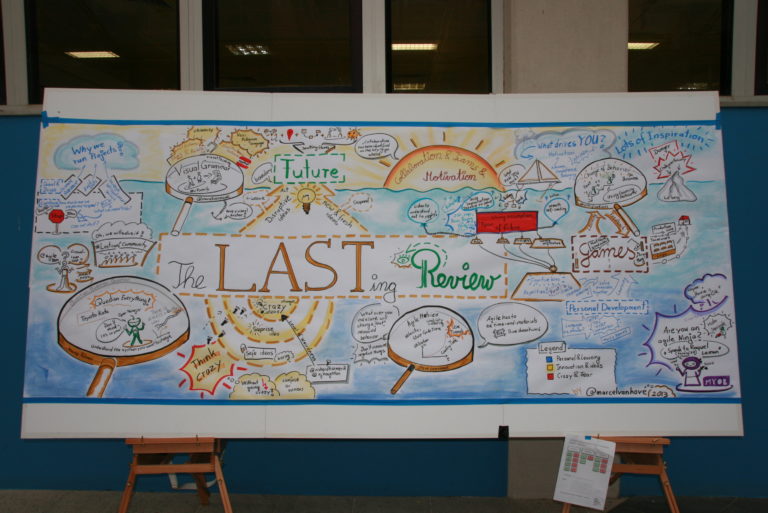I was looking forward to the LAST conference for quite a while. Last week the LAST conference took finally place at the Swimburn university in Melbourne.
After I gave my talk about visual thinking (PDF), I invested the rest of the day drawing one visual summary of the LAST conference. I would like to thank all conference visitors for their help and their visual notes without that big sheet of paper would be still white and boring!
Furthermore, I would like to thank Ed Wong and Craig Brown for their great organization of the LAST conference.






